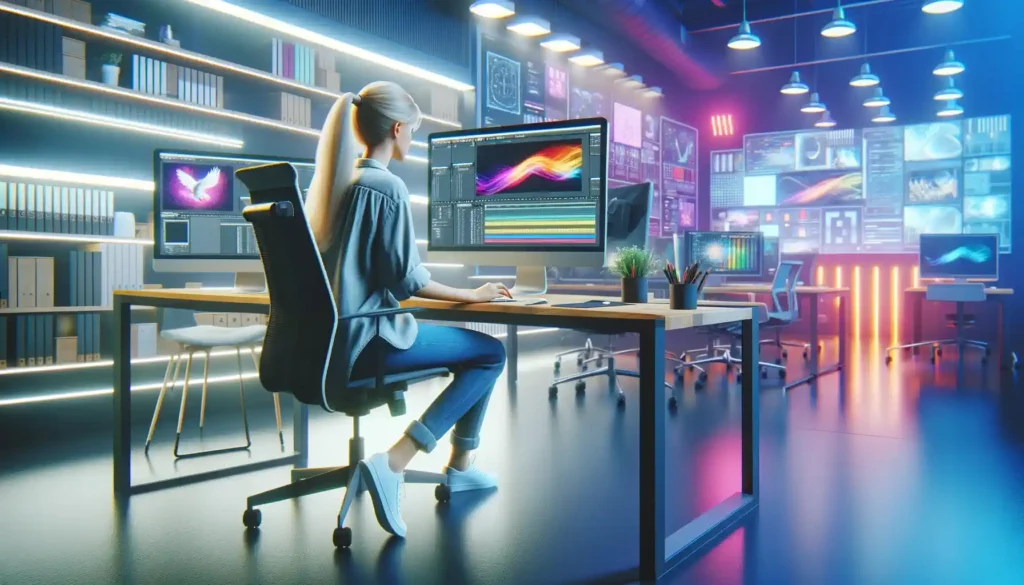The Motion Design Process: From Scribbles to Screen Magic! So, you’ve got a motion design project in mind. Fantastic! Now comes the part where we sit in a room (or Zoom), stare at each other awkwardly for a few minutes, and ask the all-important question: What’s this process for creating a motion design? Is it selling toothpaste? A snazzy new app? Or something truly mind-bending like… socks with motivational quotes? We start by brainstorming and tossing out ideas like confetti at a parade because nothing says “we’re professionals” like using whiteboards to draw stick figures and flow charts that no one will ever understand.

2. Script It Like a Movie – But With Fewer Explosions
Once we’ve decided, “Yes, this will sell socks,” we move on to the script. This is where we pretend we’re Hollywood screenwriters, except we’re not crafting the next superhero movie. We’re just trying to explain how those socks will make you feel like you can conquer the world. The script has to be tight, punchy, and concise—because no one wants to sit through a five-minute ode to foot fashion.
3. The Storyboard – When Drawing Stick Figures is Totally Acceptable
Now that we’ve written the most compelling sock story of all time, we jump into the storyboard phase. Think of this as a comic strip, but one that’s terrible because none of us are professional illustrators. At this stage, it’s less about how it looks and more about what it looks like. You might wonder, “Does this stick figure really capture the essence of luxury socks?” Answer: absolutely not, but it’s all about the vision, baby!
4. Designing the Elements – “Oooh, Shiny!”
This is where the fun starts. We take all that brainstorming, scripting, and stick-figure artistry and turn it into actual visual elements. Think sleek shapes, fancy fonts, and color schemes that say, “Yes, I know what RGB means.” Suddenly, everything is looking less like a kindergartner’s art project and more like the digital masterpiece it’s meant to be. Except for when it’s not. Then it’s back to the drawing board… literally.
5. Animating – Where the Magic Happens (and the All-Nighters Begin)
Ah, animation—the phase where we take all those shiny graphics and make them move. Suddenly, that sock isn’t just a sock. It’s a sock with personality! It’s strutting, it’s twirling, it’s making you question whether you’ve ever truly appreciated footwear before. This is the stage where After Effects and Blender become our best friends, and where we lose a bit of our sanity adjusting the motion of a single frame for the hundredth time. But hey, it’s all worth it when that sock lands perfectly on cue!
6. Sound Design – “Can You Hear Me Now?”
You know what takes your masterpiece from “cool video” to “cinematic experience”? Sound. Oh yeah, nothing says professional like syncing up the whoosh of a moving graphic with a satisfying swoosh sound. Is it upbeat enough? Does it vibe with the sock’s message of empowerment? Can we even afford the royalty fees? It’s a delicate dance.
7. Feedback – “But What If We Move This 1 Millimeter to the Left?”
Once everything is animated, it’s time for feedback—also known as the phase where your client suddenly has a lot of thoughts. “Can we make the sock pop more?” “What if it sparkled?” “I think it needs more… sock-ness?”
8. Final Render – “Okay, Let’s Do This for Real”
We’ve made it. After countless revisions, tweaks, and a near existential crisis over the sock’s color, we’re ready to hit the big red button. Render. This is where our computers sound like they’re about to take off into space, and we sit there praying to the animation gods that nothing crashes in the final 1%. And when it’s done? Pure, unfiltered joy.
9. Delivery – The Moment of Truth
Now, we send the final video off to the client with the utmost confidence. They watch it, and after what feels like 10 years of holding our breath, they say, “It’s perfect!”
10. Rinse and Repeat – Because There’s Always Another Project
What actually process for creating a motion design? And just like that, we’re back to square one with a new project. It’s a cycle of creativity, caffeine, and client revisions that never ends. But let’s be honest—there’s nothing we’d rather be doing. Because turning ideas into living, breathing animations is what it’s all about… even if the subject is socks.



